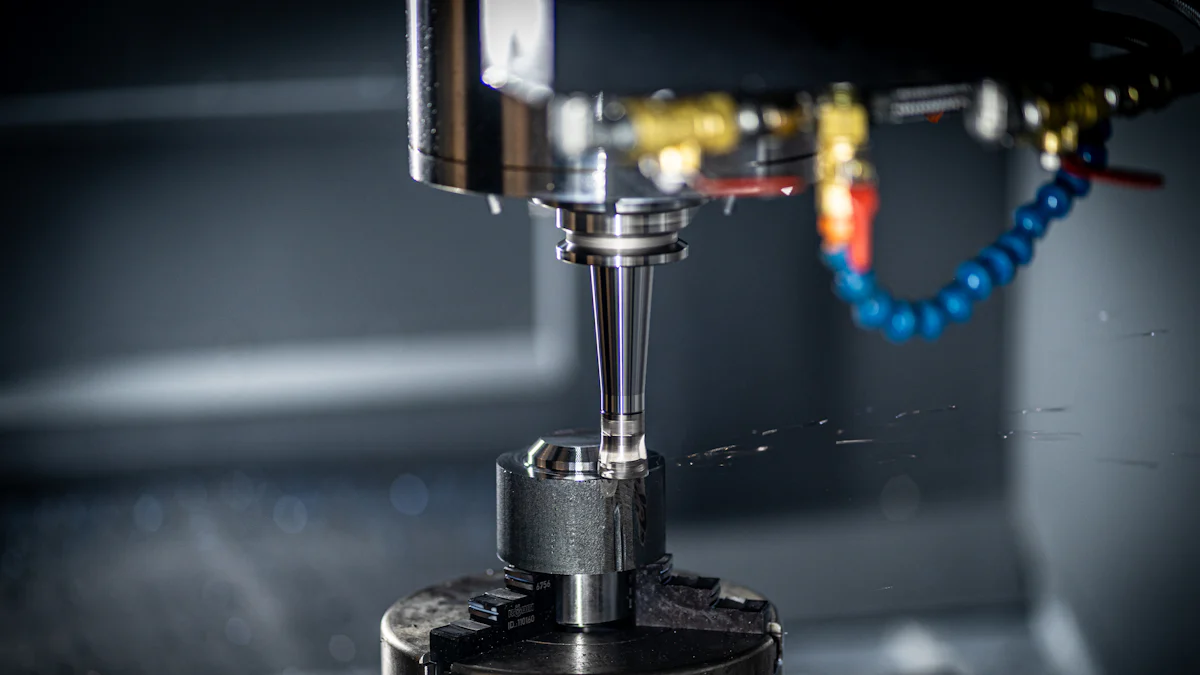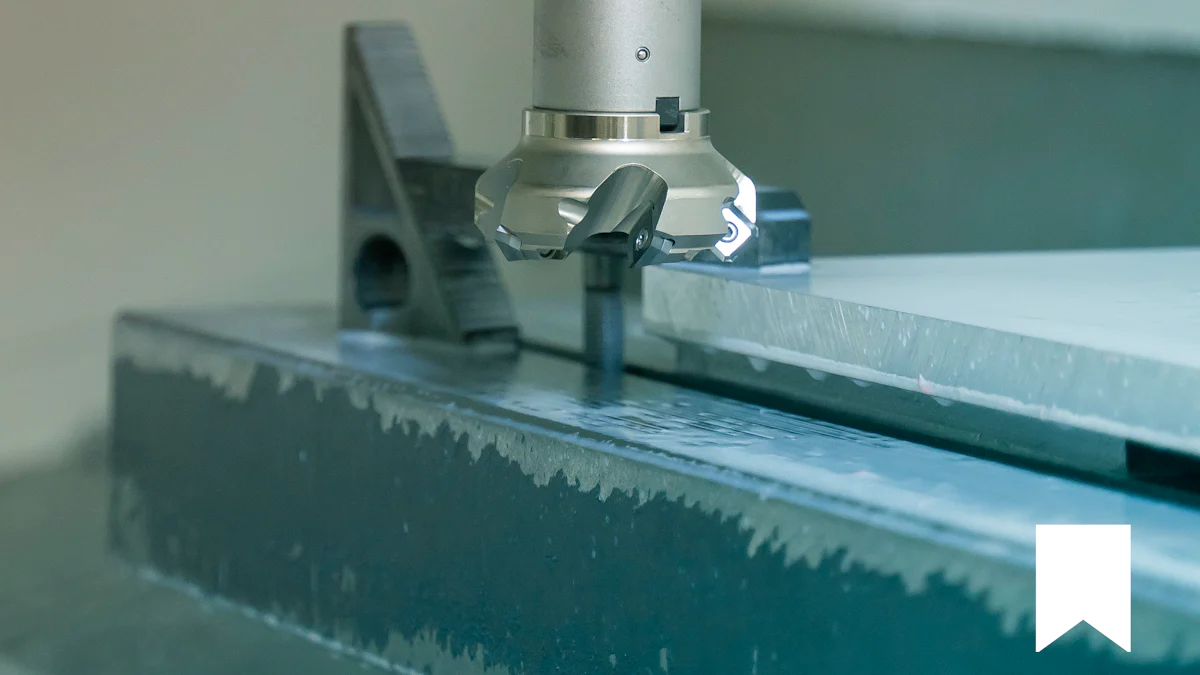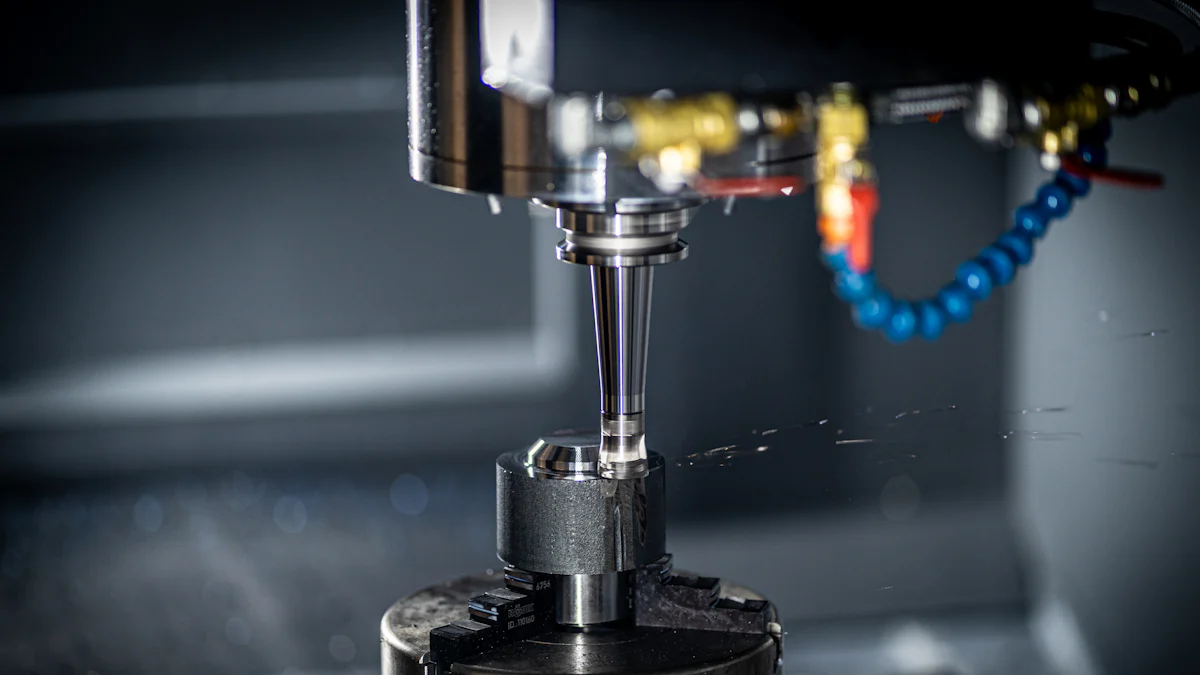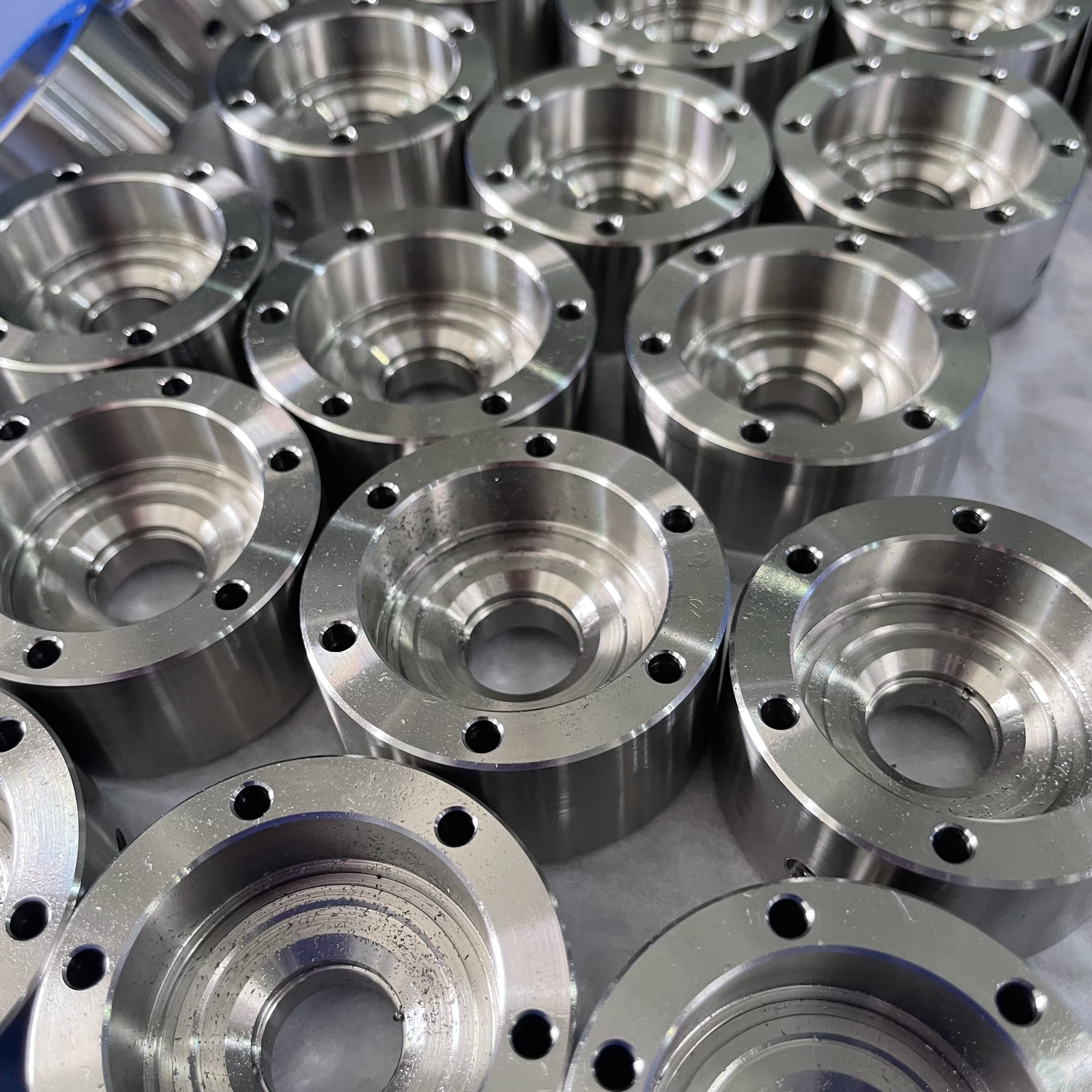How CNC Parts Are Made: A Step-by-Step Guide

In the realm of manufacturing, CNC machining stands as a pinnacle of precision and efficiency. The production processes for CNC parts milling and CNC machined components have revolutionized industries worldwide. From aerospace to medical equipment, the demand for intricately crafted parts continues to soar. This guide delves into the intricate world of CNC parts manufacturing, offering a detailed roadmap through the meticulous steps involved in creating these vital components.
Understanding CNC Machining

In the realm of manufacturing, CNC machining has significantly evolved over the years. The technology has witnessed a remarkable transformation, leading to increased accuracy, precision, and speed in the production processes. This evolution in CNC machinery technology is a testament to its continuous progress and adaptation to modern industrial demands.
What is CNC Machining?
Definition and basic principles
The fundamental essence of CNC machining lies in its computerized control system that orchestrates the movement of cutting tools with unparalleled precision. This methodical approach ensures that each operation is meticulously executed according to the programmed instructions, resulting in immaculate parts production.
Historical background and evolution
From its inception to the present day, CNC machining has undergone a profound journey marked by technological breakthroughs and innovations. The historical timeline of CNC machinery history continues to unfold with each advancement propelling the industry forward.
Types of CNC Machines
CNC milling machines
Among the diverse array of CNC machines, milling machines stand out as versatile workhorses capable of shaping various materials with intricate detail. Their adaptability and precision make them indispensable in modern manufacturing processes.
CNC lathes
CNC lathes represent another cornerstone in the world of machining, specializing in cylindrical components and intricate designs. These machines excel in creating rotational parts with exceptional accuracy and efficiency.
CNC routers
For tasks requiring precision routing and engraving on flat surfaces, CNC routers offer unmatched capabilities. Their ability to carve intricate patterns on diverse materials makes them invaluable tools across multiple industries.
Other specialized CNC machines
Beyond the conventional categories, specialized CNC machines cater to specific manufacturing needs, ranging from wire EDM for precise cuts to plasma cutters for metal fabrication. Each specialized machine plays a crucial role in fulfilling unique production requirements.
Key Components of CNC Machines
Machine bed
The foundation of every CNC machine, the machine bed provides stability and support during operations. Its robust construction ensures optimal performance and accuracy throughout the machining process.
Spindle
At the heart of every CNC machine, the spindle drives the cutting tool's rotation with exceptional speed and precision. This critical component determines the machining speed and quality of the final product.
Control panel
The nerve center of a CNC machine, the control panel houses an array of buttons, switches, and displays that enable operators to program and monitor operations effectively. Its intuitive interface simplifies complex machining tasks for enhanced productivity.
Tool holders and cutting tools
Essential elements in any machining operation, tool holders secure cutting tools in place while ensuring precise alignment during cutting processes. The choice of cutting tools directly impacts surface finish quality and overall part accuracy.
The CNC Parts Manufacturing Process

Designing the Part
CAD (Computer-Aided Design) software
In the realm of CNC parts manufacturing, CAD software serves as the cornerstone for designing intricate components with unparalleled precision. This advanced technology enables engineers to create detailed digital models that form the blueprint for the final machined parts.
Creating a digital model
The process of creating a digital model involves translating design specifications into a virtual representation of the desired part. Through meticulous attention to detail and geometric accuracy, engineers ensure that every aspect of the component is captured in the digital realm before transitioning to physical production.
Preparing the CNC Machine
Setting up the machine
Before commencing the machining operation, operators meticulously set up the CNC machine to align with the specific requirements of the part design. This crucial step involves configuring parameters such as tool paths, cutting speeds, and feed rates to optimize performance and accuracy during production.
Loading the material
Once the machine setup is complete, operators carefully load the raw material onto the machining platform. Whether it's metal alloys or rigid plastics, selecting high-quality materials is essential to achieving precise and durable CNC parts that meet industry standards.
Installing the appropriate tools
To execute flawless machining operations, operators install cutting tools that are tailored to the intricacies of each part design. From end mills to drills, selecting the right tools ensures optimal performance and efficiency throughout the manufacturing process.
Programming the CNC Machine
CAM (Computer-Aided Manufacturing) software
CAM software plays a pivotal role in transforming CAD designs into actionable instructions for CNC machines. By generating toolpaths and defining machining strategies, CAM programs streamline production processes and enhance overall efficiency in part manufacturing.
Generating the G-code
The generation of G-code is a critical step that converts CAM instructions into machine-readable commands for CNC equipment. This alphanumeric language dictates tool movements, spindle speeds, and cutting depths, ensuring precise execution of each manufacturing operation.
Uploading program to CNC machine
Upon finalizing G-code generation, operators upload the program to the CNC machine's control system. This seamless transfer of data initiates the machining sequence based on pre-defined parameters, setting in motion a meticulously orchestrated process that culminates in precision-engineered CNC parts.
Machining the Part
Initial setup and calibration
To commence the machining process, operators meticulously prepare the CNC machine for optimal performance. Calibration ensures precise alignment of tools and workpiece, setting the stage for flawless execution.
Running the CNC machine
With the setup complete, the CNC machine springs to life, its mechanical symphony resonating through the workshop. The cutting tools engage with precision, sculpting raw materials into intricate components with unrivaled accuracy.
Monitoring the machining process
Vigilance is paramount as operators oversee every aspect of the machining operation. From tool movements to material removal, meticulous monitoring guarantees that each part emerges flawlessly crafted and ready for subsequent processes.
Post-Machining Processes
Removing the part from the machine
Upon completion of machining, operators delicately extract the finished part from the CNC machine. Careful handling ensures that no damage occurs to the meticulously crafted component, preserving its integrity for further processing.
Deburring and finishing
The next step involves refining the machined part through deburring and finishing techniques. Removing rough edges and imperfections enhances both aesthetics and functionality, culminating in a polished product ready for inspection.
Quality control and inspection
Before final approval, each CNC part undergoes rigorous quality control measures. Precision instruments scrutinize dimensions and tolerances, ensuring adherence to exact specifications before granting certification for use in diverse industries.
Advantages and Challenges of CNC Machining
Advantages
Precision and accuracy
CNC machining boasts unparalleled precision and accuracy in the production of intricate parts.
The computerized control system ensures meticulous execution of each operation, resulting in components with exacting specifications.
This precision is vital in industries where even the slightest deviation can lead to significant consequences.
Efficiency and speed
One of the key advantages of CNC machining is its efficiency and speed in producing parts.
The automated processes streamline production, reducing lead times and enhancing overall productivity.
Manufacturers benefit from swift turnaround times without compromising on quality or precision.
Versatility in materials and designs
CNC machining offers unparalleled versatility in working with various materials and intricate designs.
From metals to plastics, CNC machines can sculpt a wide range of materials with ease.
This adaptability allows for the creation of complex geometries and customized components tailored to specific requirements.
Challenges
Initial setup costs
A notable challenge in CNC machining is the initial setup costs associated with acquiring and configuring the machinery.
While the long-term benefits are substantial, the upfront investment can be a barrier for small businesses or startups.
However, these costs are offset by increased efficiency, precision, and production capabilities over time.
Requirement for skilled operators
Another challenge lies in the requirement for skilled operators to program and operate CNC machines effectively.
The intricacies of CAD/CAM software demand specialized training to harness the full potential of these advanced systems.
Investing in workforce development ensures that operators can maximize machine performance while minimizing errors.
Maintenance and troubleshooting
Maintaining CNC machines at optimal performance levels poses a continuous challenge for manufacturers.
Regular upkeep, calibration, and troubleshooting are essential to prevent downtime and ensure consistent quality output.
Implementing robust maintenance schedules and proactive troubleshooting protocols is crucial for sustaining efficient operations.
CNC machining surpasses traditional methods with its advanced technology, diverse material capabilities, and exceptional precision.
Unlike manual control in traditional machining, CNC machining ensures high accuracy through computerized systems.
Explore the global accessibility of CNC manufacturing compared to 3D printing due to its widespread adoption and expertise.
Precision and quality control are paramount in CNC parts production for industries demanding flawless components.
Delve into the world of CNC machining for unparalleled efficiency and intricate part fabrication tailored to diverse applications.
See Also
Exploring the CNC Precision Parts Manufacturing Process
A Beginner's Comprehensive Guide to CNC Technology
The Definitive Manual on CNC Machining and Precision Production
Achieving Expertise in CNC Machining for Precision Components
Enhancing Skills in CNC Drilling for Precision Parts in 2024
About US
Follow Us
Your prototype holds unparalleled significance, and we deeply value its uniqueness. Collaborating with you during the preparation phase for running your prototype or parts is a commitment we gladly embrace. Whether it's a single part or a complex assembly, we are dedicated to selecting the optimal tools and pathways to bring your envisioned product to life.
At Precision Fab CNC Machining, we specialize in producing parts for prototypes, short runs, and high-volume production. Our prototyping machine capabilities extend across metal, plastic, and wood machining, with welding fabrication services available to complement and finalize your prototype if required.
Address
Address: Room320 10F, Building A,Nanshan international building, Dayawan District, Huizhou, Guangdong, 516001 China
Contacts
billy@timaycnc.com

